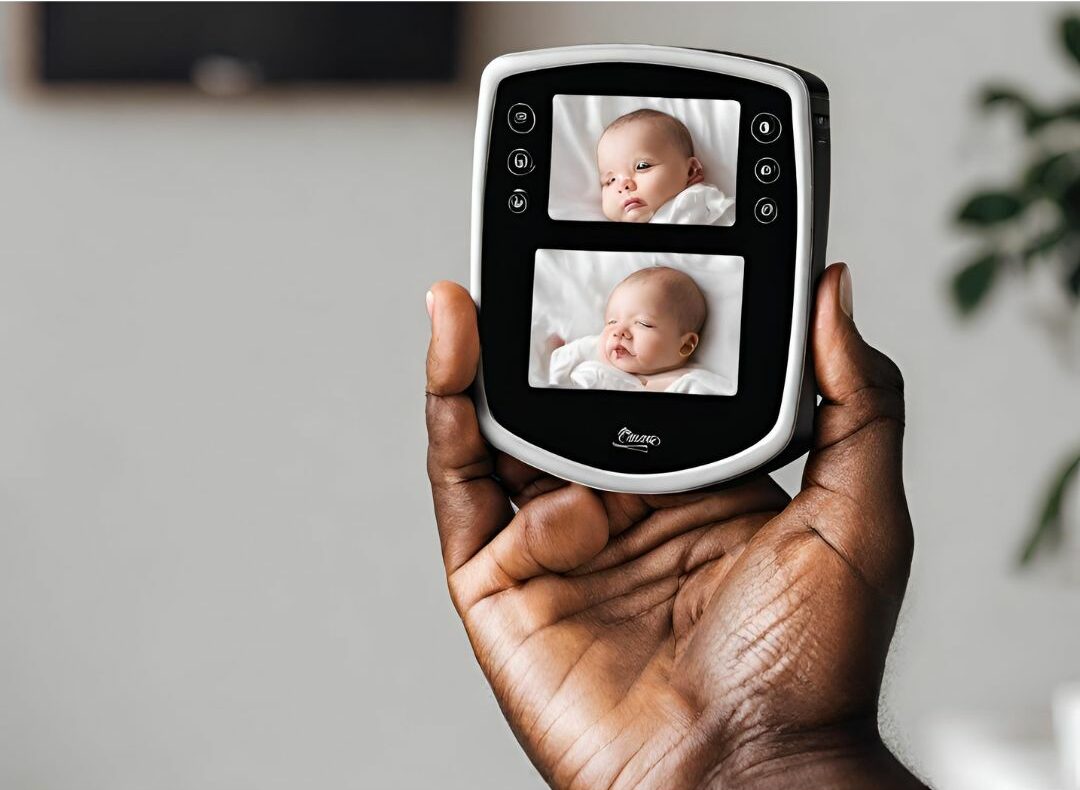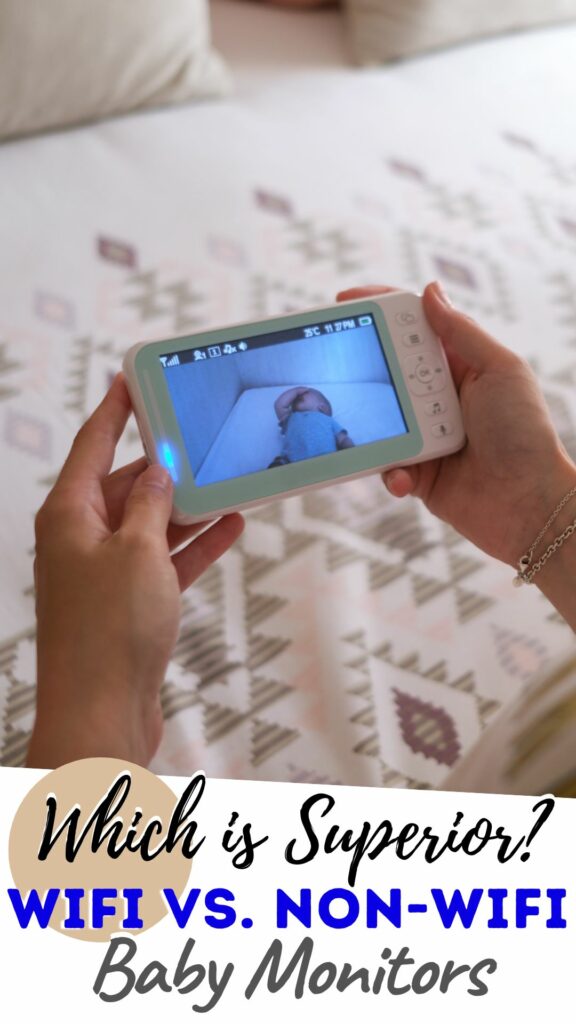
The Superior Option: Comparing WiFi And Non-WiFi Baby Monitors
Throughout our parenting journeys, continuously ensuring our baby’s safety and well-being is of the utmost importance at all times. For me it’s literally the first thing I think about when I wake up and the last thing I think about before going to bed.
As technology evolves, so do the tools at our disposal, and I for one am thankful to have the technology to always check on my babies. Baby monitors have long been amazing tool for parents, allowing them to keep an ear or eye out for their baby from another room.
However, with technological advancement, new questions arise, for instance, which is better, WiFi or non-WiFi baby monitors? In this post we will delve into features, benefits, and drawbacks to determine which is the superior choice for modern parents and hopefully help make your decision just a little but easier.

Compare Baby Monitors
In Technology: The Smart Baby Monitor
I’m kind of a bells and whistles type of girl, so smart technology is usually one my top picks. Among the numerous options available, the Leapfrog smart baby monitor stands out as a noteworthy mention. This device combines traditional monitoring with the latest technology, offering parents peace of mind through innovative features. It is a prime example of how far baby monitoring technology has come, bridging the gap between the old and the new.
Current WiFi Baby Monitors
- Features
- Remote Accessibility: WiFi monitors allow parents to watch their baby from anywhere, as long as they have an internet connection.
- Advanced Notification: They can send alerts to your phone about your baby’s movements, sounds, and even room temperature changes.
- Integrated Services: Some models integrate with other smart home devices, enhancing the overall monitoring system.
- Benefits
- Convenience: Monitoring your baby remotely provides unparalleled convenience, especially for working parents.
- Peace Of Mind: Real-time notifications and the ability to check in on your baby anytime offer a great sense of security.
- Flexibility: These monitors can easily adapt to your family’s changing needs, thanks to software updates and compatibility with various devices.
- Drawbacks
- Security Concerns: WiFi monitors are susceptible to hacking, raising concerns about privacy and safety.
- Dependence On the Internet: They rely heavily on a stable Internet connection, which can be a limitation in areas with poor connectivity.
- Higher Price Tag: Generally, WiFi monitors are more expensive than their non- WiFi counterparts, making them a significant investment.

Classic Non-WiFi baby Monitors
- Features
- Simple Operation: Non-WiFi monitors are straightforward, without an internet connection or a smartphone app.
- Dedicated Connection: They utilize a private, secure connection between the monitor and the parent unit.
- Battery Efficiency: Typically, these monitors have longer battery life due to their simpler technology.
- Benefits
- Enhanced Privacy: Without internet connectivity, there’s no risk of hacking, ensuring your baby’s moments remain private.
- Reliability: They offer a stable connection without worrying about internet outages affecting performance.
- Affordability: Non-WiFi monitors are generally less expensive, making them accessible to a wider range of families.
- Drawbacks
- Limited Range: The range is often restricted to a certain distance, beyond which the monitor may not perform optimally.
- Lack Of Advanced Features: They lack advanced features and notifications for WiFi models.
- No Remote Access: Parents cannot check on their baby unless they are within the monitor’s range, limiting flexibility and peace of mind.
Making The Choice: WiFi vs. Non-WiFi
When deciding between a WiFi and a non-WiFi baby monitor, consider the following factors:
- Lifestyle Needs: Consider your daily routine and which features will most benefit your family. WiFi monitors offer a significant advantage for tech-savvy parents or those needing to monitor their baby while away.
- Budget Considerations: Determine how much you are willing to invest in a baby monitor, as WiFi models can be more expensive.
- Security vs. Convenience: A non-WiFi model might be preferable if security is a top priority. However, a WiFi monitor might be the better choice for those who value convenience and advanced features.

The Evolution Of Baby Monitors: Embracing Modern Needs
As we explore the comparison between WiFi and non-WiFi baby monitors, it’s important to understand the evolution that has led to the current landscape. Initially, baby monitors were simple audio devices designed to alert parents to their baby’s cries.
In fact, the first idea for an auditory monitor was born out of a baby being taken out of here nursery! (it was huge news)
Over time, the demand for more sophisticated monitoring has led to the development of video capabilities, two-way audio communication, and motion detection, as mentioned above. This evolution reflects modern families’ changing needs and expectations, who seek to hear, see, and interact with their babies from a distance.
Those are all things that I consider when looking for products for my three children.
WiFi Baby Monitors: Advancing With Technology
- Integration With Smart Home Systems: Many WiFi baby monitors can be integrated into routines. For instance, the monitor can trigger soft lullabies or dim the lights in the baby’s room when it detects that the baby is getting sleepy.
- Access To Historical Data: Some models offer the ability to store and access historical data, such as sleep patterns, crying frequency, and room temperature change. This can be invaluable for parents looking to understand and improve their baby’s sleep habits.
Overall, choosing between a WiFi and a non-WiFi baby monitor depends on individual needs, preferences, and priorities. Each type has its features, benefits, and drawbacks to consider. This is for parents who prioritize advanced features and remote monitoring capabilities. WiFi baby monitors like the Leapfrog smart baby monitor may offer the best solution.
On the other hand, those who value simplicity, reliability, and security might find that non- WiFi baby monitors better meet their needs. Ultimately, the decision should align with the best way to ensure the peace of mind and safety of both the baby and the parents.
Welcome to my blog! I am an activity mom of three and I have over 15 years of experience crafting, writing, designing and creating. My mission is to bring fun, balance and learning to your busy homes with activities, tips, inspiration, and organization!






